I just ran the Bay Bridge Half Marathon.
As my very first race at age 41, this was a total midlife crisis. To understand how big of a deal it was, though, we gotta go way back…
The Hou Family Legend
My family’s lack of athletic inclination and ability is legendary, something we joke about and sort of wear as a badge of honor. Family gatherings since our childhood had often involved conversations about how individuals in the Hou family were stay-at-home bookworms. While their spouses all played some sports like normal people, my dad and his siblings were unable to even ride bicycles. My mom was the parent who’d play balls with us, and for anything more serious we’d ask my uncle (aunt’s husband). Even among the cousins who equally had 50% Hou genes, those of us who inherited the last name were far less athletic than the children of my aunts.
This trait was incredibly consistent when I looked into our family history. The Hous were a big clan in Wuxi and we had several fairly accomplished ancestors from the past 500 years – scholars, government bureaucrats, painters, educators… with zero indication that any of them were good at riding horses or swinging swords.
With that backdrop, I never learned to properly throw a frisbee or kick a soccer ball. I’d never go into the wilderness because presumably I’d be the one who my friends outrun in a bear encounter.
The Pre-Running Days
With my metabolism slowing down in the late 20s, I could no longer eat like a sumo without feeling sluggish. In order to continue my gluttonous habits, I started hitting the gym. Treadmills were a complete afterthought, and the first couple times I tried, I was on the verge of a heart attack after spending 10 minutes to jog a single mile. My body condition was infinitely far from any real running, and my mind was infinitely far from anyone who ran for fun.
Over the course of the following decade, though, I spent more and more time on the treadmill. A big reason was the ability to get measurable output from these machines. As a numbers nerd, it was satisfying to quantify the efforts during each workout session. I got used to running 20 minutes at a time, then 30, then I challenged myself to squeeze more distance into each minute. Working out on a treadmill was still very different from real running, but I was getting used to the elevated heart rate, the sweat, and the endorphins.
The Running Away From Cabin Fever
Like everything else in this world, my exercise routines were forever changed when the COVID-19 pandemic hit. Gyms were shut down so no more treadmill or other equipment. Office and school and everything else closed so I hardly had to ever put on shoes. It totally sucked.
Working from home while the two kids attended school from home was not among my favorite memories. During those dreadful months, a tedious task was the periodic pickup of new class materials. I’d usually drive, until I realized that it was a rare chance for me to get out of the house for a breath of fresh air. To blow off some steam, I tried running the half mile to school. After some attempts, I managed to actually do it.
I know it sounds funny, but it was a big deal to realize that I was capable of running. Despite the years spent on treadmills, actually moving my body from point A to point B by quickly shuffling my legs was still a radical idea. With the reopening of gyms seemed more and more unlikely, I needed to adapt in order to deal with my increasingly unstable mental health. I put on the sneakers, headed into the empty streets, and ran.
The Sightseeing Runs
It began as nothing more than an excuse to get out of the house while Hong was home to watch the kids. I’d jump out of bed at 6am each Saturday and Sunday and go for a jog before breakfast. For the entire first year, I’d hold my phone in one hand (needed the GPS in case I got lost) and a mask in the other (gotta respect the health etiquette).
It took me no time to see parts of the neighborhood that I had never been before. I made it a game and started mapping every route I took, and planned for the next run to take a different path. Week after week, I inched toward my goal to set foot on every street and see every address in Millbrae. I’d eventually do not just that, but also cover most of San Bruno and Burlingame, and even parts of Hillsborough. I was amazed to reach downtowns that I had previously only driven to, see incredible scenery along the way, and discover wild animals that I didn’t know were around. Running was no longer just about exercise, but to see things and connect with my surroundings.
During these pandemic runs, I also discovered something that blew my mind: once I was able to run 3-4 miles, it hardly took more effort to run 5-6 or even 8-10. Once I got the momentum going, it was merely about continuing to put one foot in front of the other, rinse and repeat.
As my mileage built up, I started feeling curious about the long races that people would do. It felt like an absurd idea that anyone would pay to run in a massive group, but some of the major running events (such as the NYC Marathon) provided more epic scenery than Millbrae’s residential street blocks. Having an official record seemed like an attractive idea, too. I wondered how my speed and stamina would stack up against marathon runners (not great), and I craved to know where my limits were.
As the pandemic thawed and more car traffic returned to the streets, though, running became less enjoyable and I gradually cut back.
The Catalyst to Sign Up
In true Hou family fashion, I trailed behind my spouse on the athletic front. This January, Hong signed up for and ran in the San Francisco Hot Chocolate 5k (what a weird branding for a running event). She had never participated in a race before and didn’t run much, but just spontaneously decided to go for it. The kids and I went to cheer her on.
It still seemed absurd that she had to pay (albeit with her employer’s massive discount) and do this thing in a chaotic crowd. However, there was something really neat about the organization of the event, dedicated running path in Golden Gate Park, and the score board with everyone’s electronically-recorded time. She thoroughly loved the adrenaline rush. We felt pumped by the ambient energy. I watched a 9-year-old girl cross the finish line at a speed that I could only dream of.
Hong vowed to do it again and encouraged me to do the same. “Aw, I don’t know about that,” was my reaction, but deep down I was tempted. A brief research later, we learned about the Bay Bridge Half Marathon that was being held 4 months later. Wow, I guess that was my calling. There weren’t many places in the world as iconic as the Bay Bridge. This was my chance to run somewhere really cool.
I thought about it for a couple weeks. Then I paid the registration fee.
The Training
Initially, I thought it’d be amusing to just show up and wing it. I was confident about being able to cover 13 miles, and there was no way I could compete with the top 50 contenders. Therefore, I was in the Goldilocks zone of not being good enough to stress about performance, and not bad enough to worry about total failure. I was ready for it.
Unfortunately, it didn’t take a full week before my Type-A inner self got the better of me. I needed to train. I needed to quantify the limits of my abilities, and justify my $185 investment by doing more than a casual Sunday jog. Before that, I needed to learn what “training for a race” entailed. Googling a few sources for cross referencing, it seemed like all programs focused on:
- Distance – to cover a lot of weekly baseline miles via a mix of intensity and duration; this was relatively easy, as long as I could invest a massive amount of time
- Speed – to run at an unspecified “fast” pace periodically; instead of just shuffling the legs back and forth, this required picking the knees up with intention and kicking the feet forward
I’m a good churner, so going for distance was a lot more natural than going for speed. I tried doing both at the same time, but the two had a somewhat inverse relationship. Because the quantity of training put a lot of strain on my feet and legs, it wasn’t always possible to run faster than limping speed.
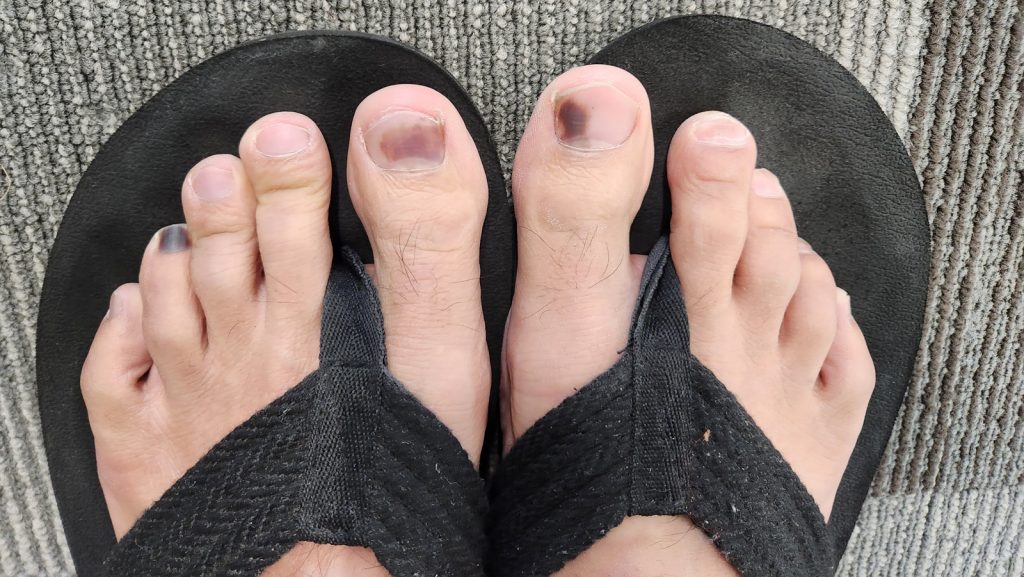
With some stubbornness, though, I managed to average 4.5 miles per day for three months.
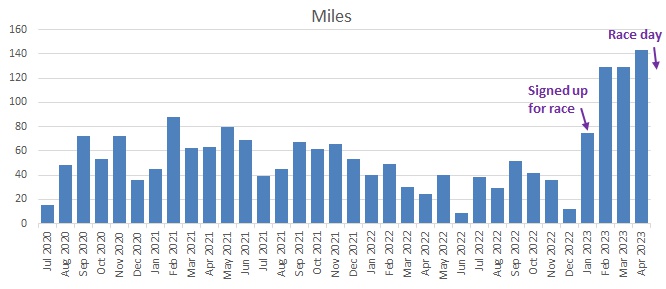
It was a whole lot of time, quite a bit of pain, and above all else, real dull. I still enjoyed the workout, but the sightseeing aspect was no more after cramming 400 miles into 3 months. There were only so many paths I could take without having to cross a whole lot of major roads or u-turn too many times. I was seeing the same trees and houses too many times per week. It didn’t help that we were having the rainiest season in over a decade, so the longest trail nearby was shut down this entire time. I got tired of the scenery and running became a chore.
Fortunately, vacation and business trips took me places, and I was able to bring the training with me. I ran on hotel treadmills in Dallas. I ran on the riverbanks in Austin. I ran at the tropical resort in Bora Bora. I ran up and down the Las Vegas Strip. The varying heat and humidity levels added much to the challenge, and I was beginning to understand how difficult it must be for athletes to compete in a city where they don’t live.
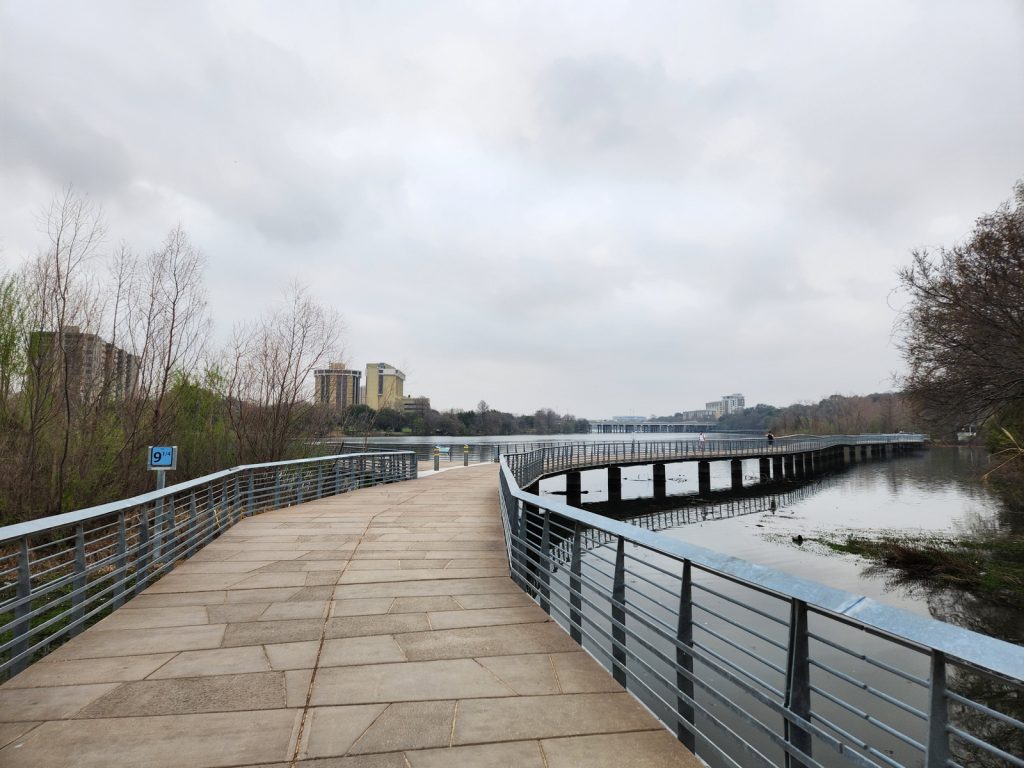
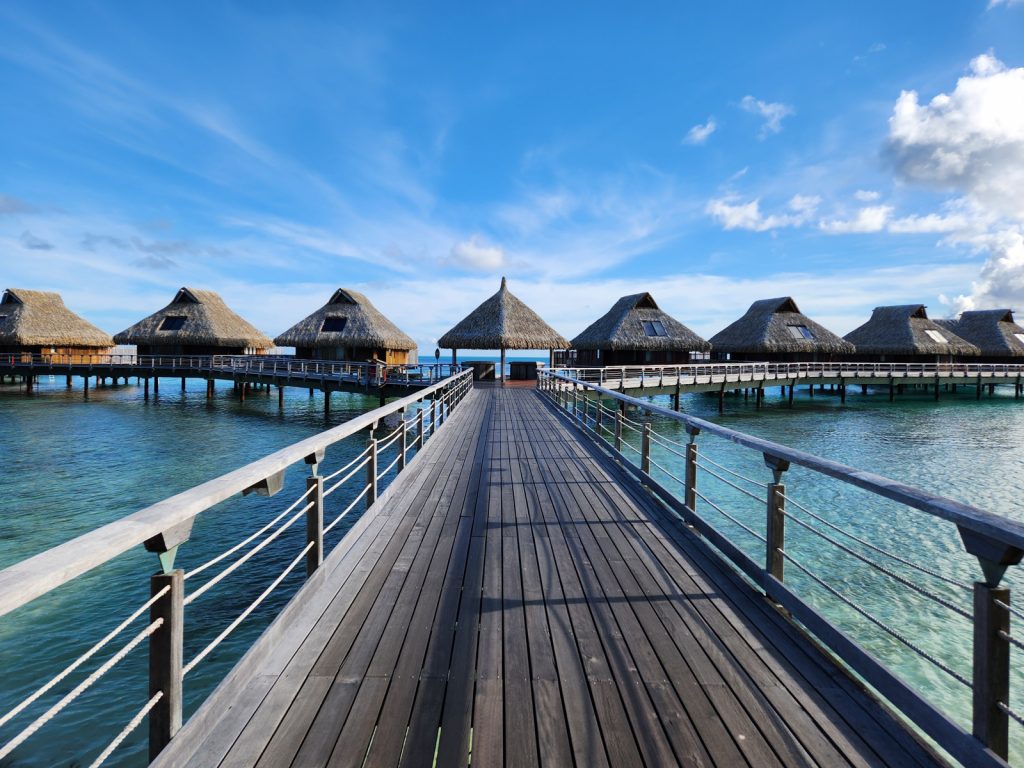
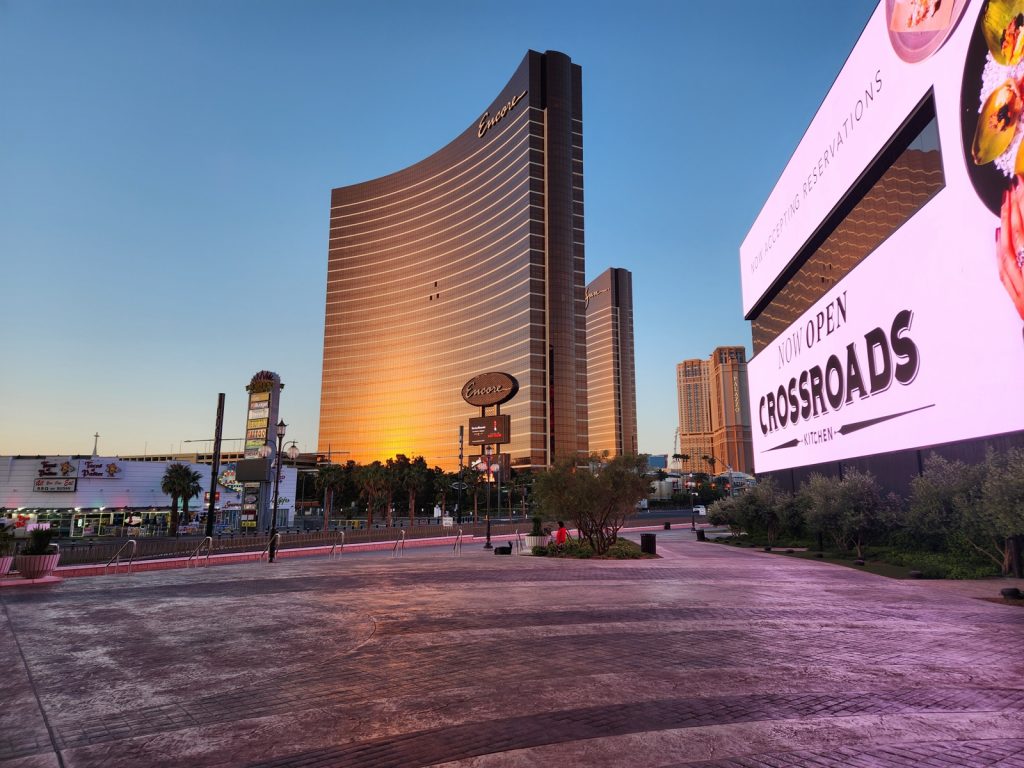
Before signing up, I knew I could’ve managed 13 miles in little over an hour and 50 minutes (1:50). With training, I was aiming to reach 1:40. A 10% improvement didn’t seem much, but I also had no clue whether it was a realistic goal. Toward the end of the training, I began to think that 1:45 was more like it even if conditions were perfect.
The Race
On Sunday, May 7, the race began at 8:15am in Oakland. The route began with 4.5 miles on land (including 1.5 miles parallel to the initial incline of the bridge), followed by 2 miles above the bay to Yerba Buena Island, before turning back on the same path. I was slightly disappointed that the race didn’t cross the whole bridge into San Francisco, though it was logistically easier to end where we started.
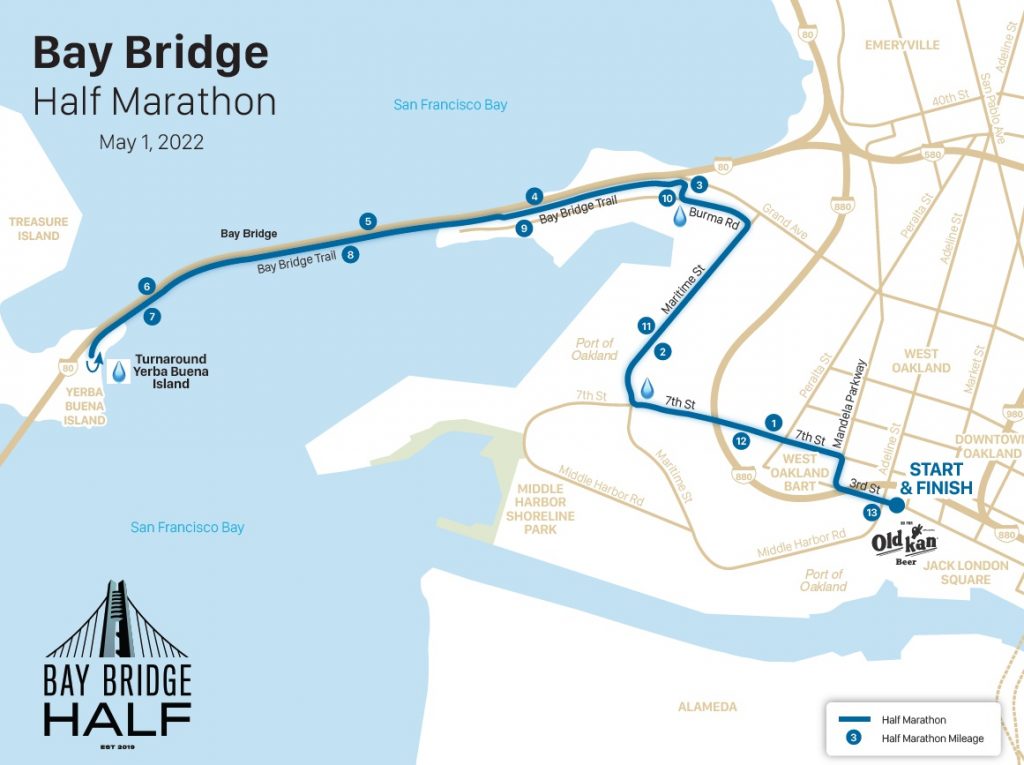
My favorite thing about this race was that Ken agreed to join me. We hadn’t seen each other since he left the company six months ago. It was great just to catch up with his family again, but doing something together was a whole other level of bonding. He hadn’t been running in recent years so participating in this race was a big commitment to properly train. However, he used to do full marathons left and right so he had a lot of experience to share with me.
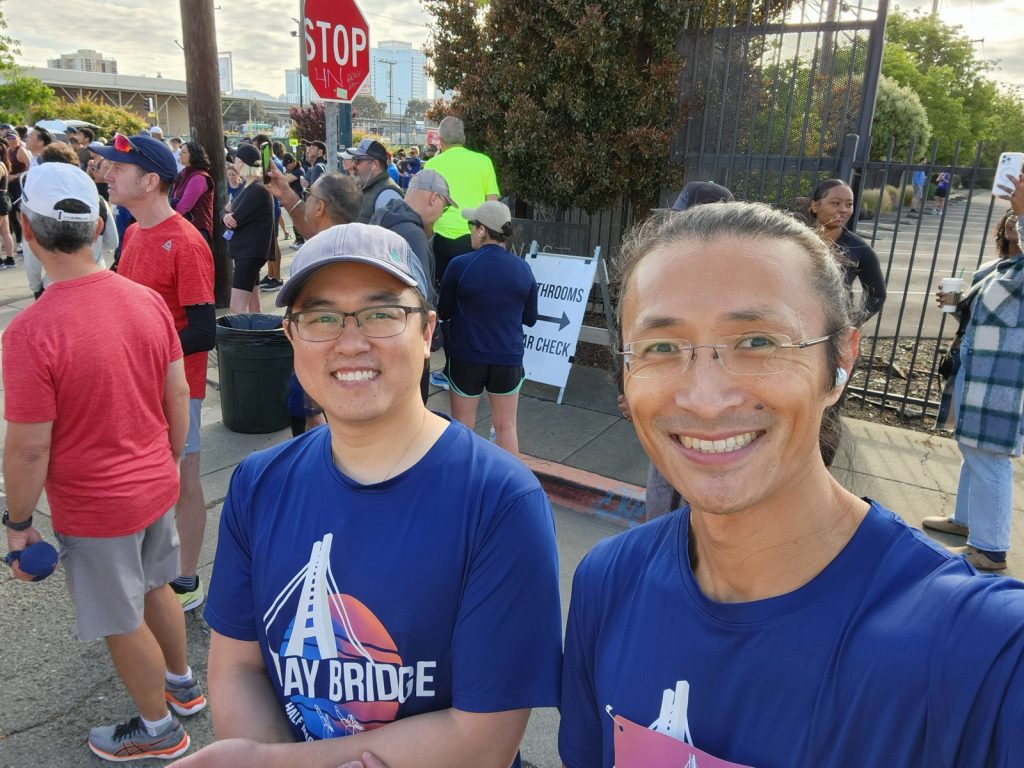
I had no concern about being able to finish the half marathon, but I did contemplate a bit about several variables:
- The course had a total elevation gain of 160 feet on the bridge toward Yerba Buena, which was really flat compared to the rolling hills of Millbrae, where plenty of my casual runs had 3-5x as much elevation change. I initially believed it would be super easy, but then wondered if not being used to running on flat ground would be a disadvantage
- I had no idea what it was like to run in a big crowd of people. It’d be energizing for sure, but would it be too energizing to the point where trying to keep up with other people’s pace exhausts me prematurely?
- Running in the wind sucks, and few places are potentially windier than a bridge over a large body of water. I knew this could impact my performance way more than anything else. Going against the wind would slow me down, but having the wind at my back would be no fun either because the ponytail whipping my face could feel like torture
Everything lined up on the race day. The weather was perfect – not cold when standing idle and not hot when running at peak heart rate. It was sunny without being too bright. There was a mild breeze to keep the air flowing but zero wind to interfere with the run.
I took Ken’s advice and started in the back, in order to avoid feeling chased by 1,000 runners or being squeezed in the middle of the chaos. The plan was to wait for the crowd to naturally thin out before picking up pace, but it was a bit too slow for my liking. Thus I went on ahead, pressing play on my high-energy music mix of Mando pop, Bollywood, English rap, and Hamilton.
The first third of the course involved nonstop passing of hundreds of people. I had to do a lot of zig zags and running on the road margins in order to get ahead. It was reminiscent of being a pedestrian in NYC, just faster, and it felt great. Although we were surrounded by asphalt and concrete, I was digging this part of the trip with warehouses and shipping containers lined the sides of the road. I passed pacers with the 2:30 sign, 2:15 sign, and 2:00 sign with relative ease. After passing the 1:50 pacer, I knew I had reached my target comfort zone. Minutes later, I was surprised to catch up and then get ahead of the 1:40 pacer. I wasn’t sure I could maintain that position for the rest of the journey, but it sure gave me a boost to know that I was ahead of goal.
The second third of the course was the round-trip on the bridge. By this point, most runners were separated by substantial difference. There was no more worries for overcrowding, and anyone overtaking anyone else was now a noteworthy event. I caught up to several folks but also watched others run past me and slowly disappear into the distance. The pressure was dialed up! I made a conscious decision to skip the water station at the turnaround point on Yerba Buena Island, the only among five opportunities to refuel that I thought made sense. Didn’t want to waste precious seconds! The view over the bay was gorgeous, especially with the SF skyline in the backdrop. The iconic scenery was the reason why I chose this race but, in this moment, I was too preoccupied with pushing myself forward to enjoy the view.
Approximately a mile into the return trip, I heard someone shout “Go Peter!” I thought it was Ken, who I had been looking for in the oncoming crowd but did not see. Later on, I realized that people – racers and spectators both – were just reading my name tag and cheering me on. I suppose that’s what people do at these events, but it was completely new to me… and it was awesome! It opened my eyes to how being surrounded by a runner’s community made an otherwise lonely workout fun, engaging, and energizing. Thanks guys!
The last third of the race returned to the truck routes. I was no longer at my peak energy level, but neither were the others. I caught up to more people. There was a slight incline through a tunnel, where I overtook 5-6 folks at a time! It seemed like training on those Millbrae hills did give me an edge, after all. I thought I’d sprint the full final mile, but that did not happen. Then I thought I’d dash after turning the final corner, but that also proved impossible. At least, I thought, I could roar while crossing the finish line… well, let’s just say I was proud to have completely exhausted my energy to get there.
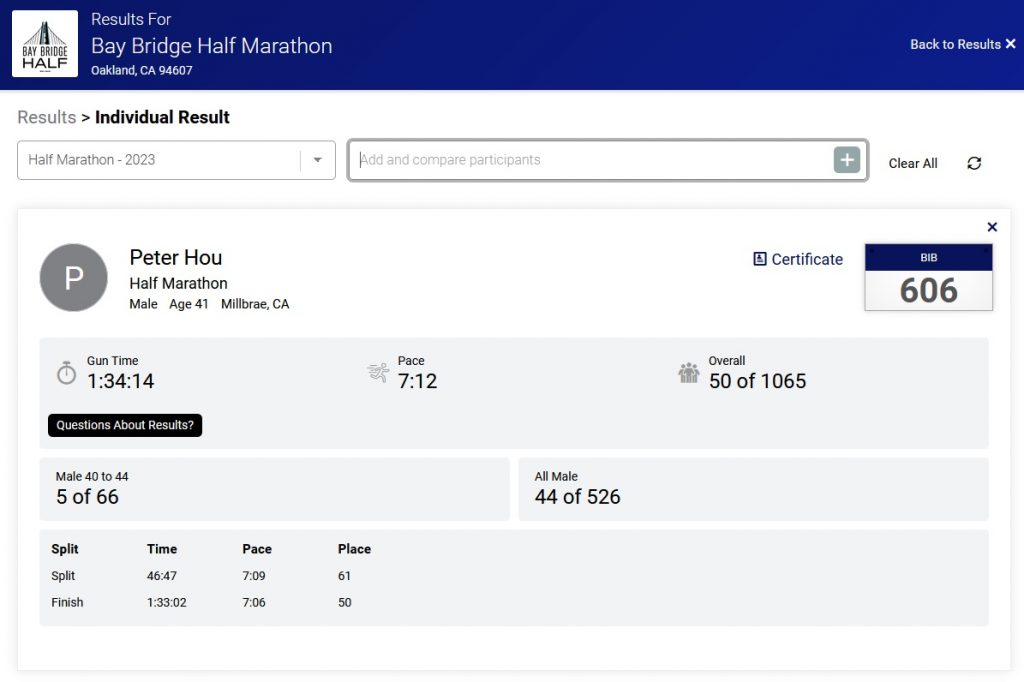
And there, I finished my very first half marathon in an hour and 33 minutes – 7% better than my original goal and 12% better than what I thought was feasible last week. I came in at the 50th place overall and 5th for my demographic group. Looks like the training paid off and my midlife crisis was done with a bang.
The Cool Down
My loving family was patiently waiting for me at the finish line and cheering for my completion. We waited together for Ken to finish, by which time his family had also arrived. We celebrated, then went for lunch and ate ice cream.
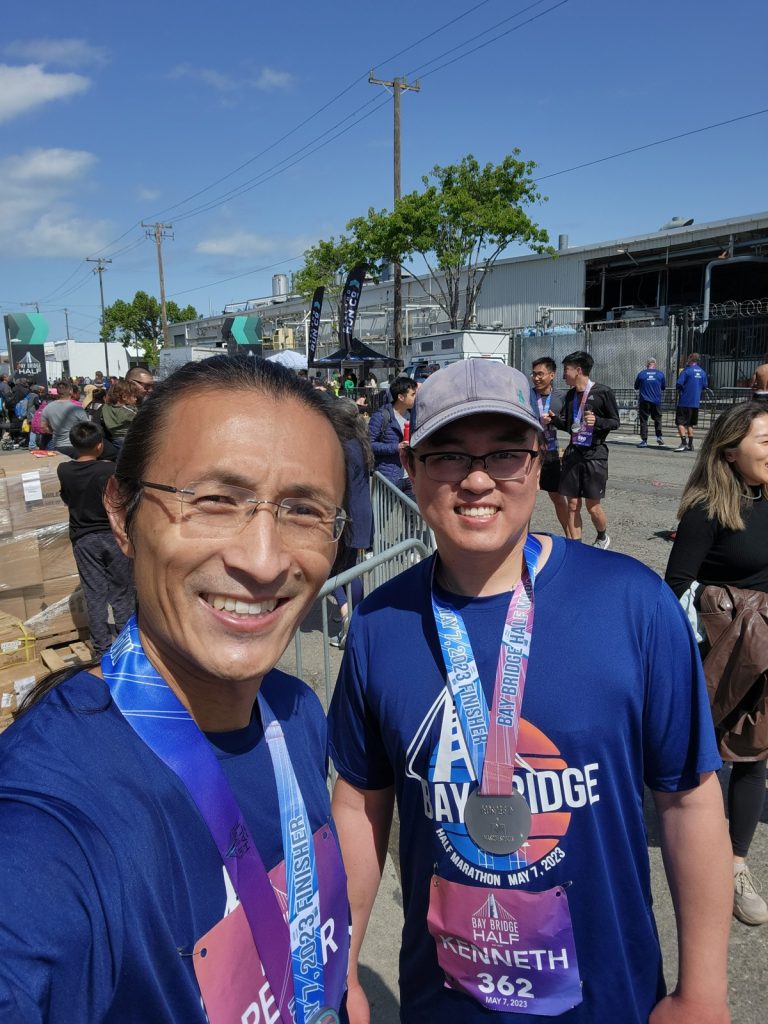
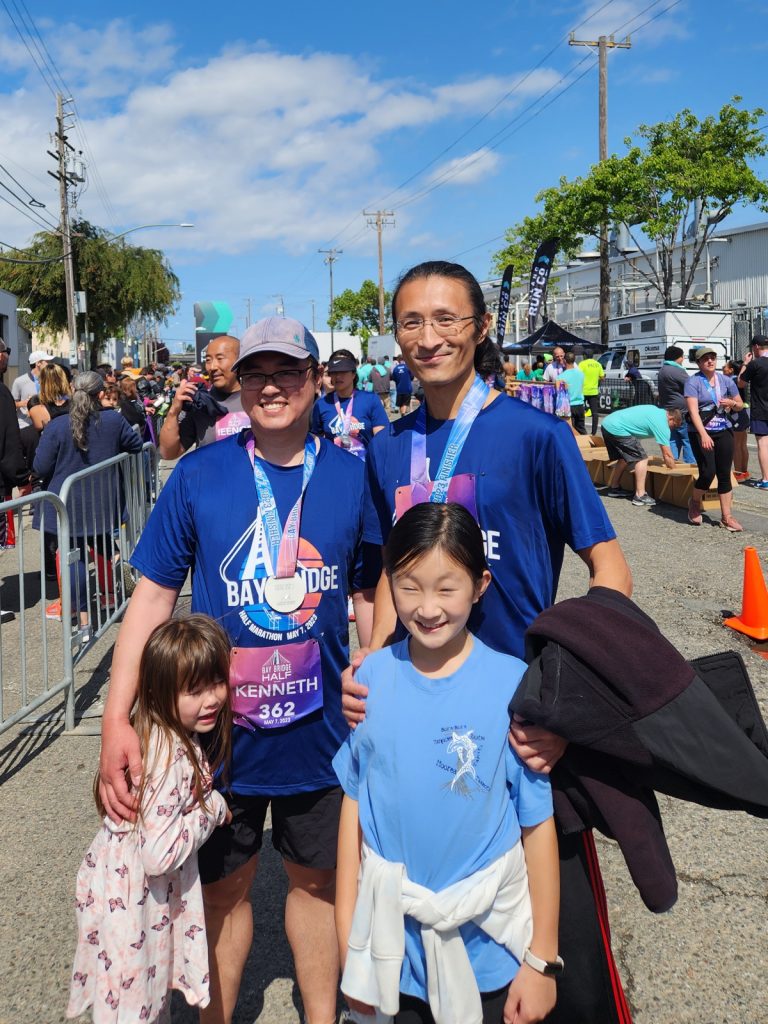
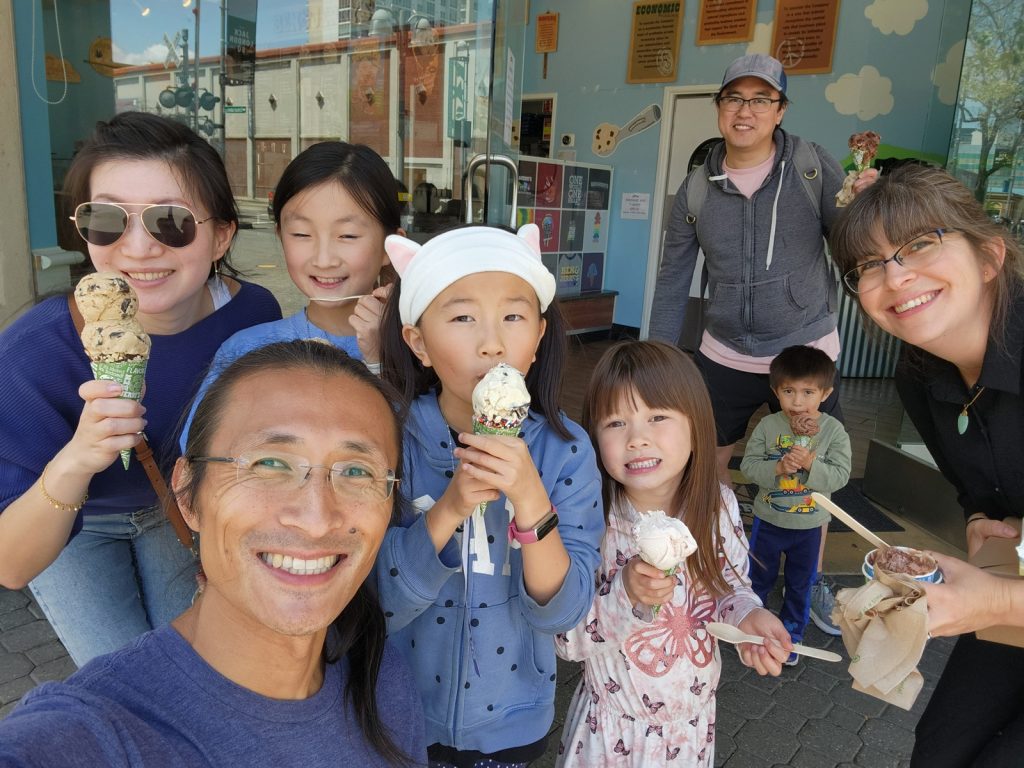
Running was great. Breaking personal records was better. Having supportive family and friends, though, was the best.
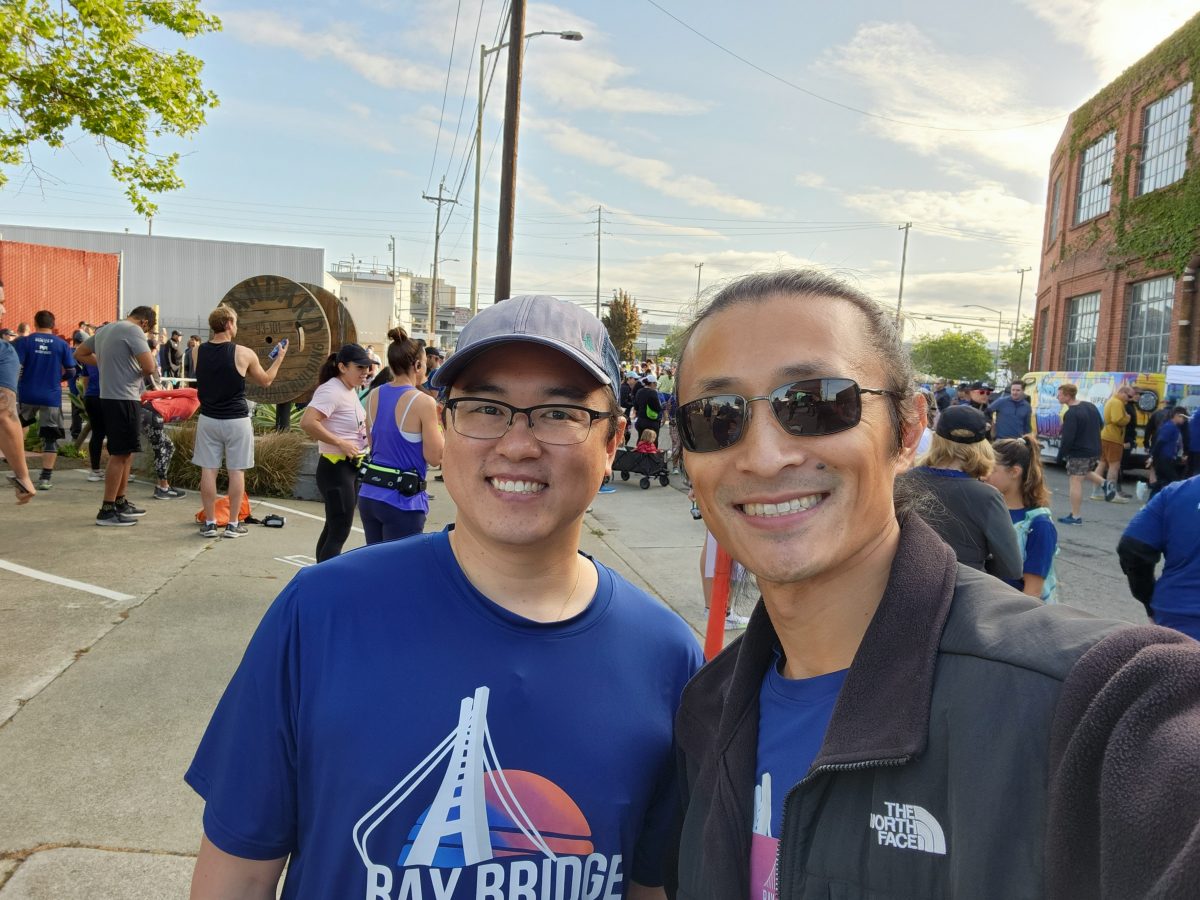
Obsessing Over That Half Marathon – Peter's Blog
May 13, 2023 at 2:18 pm[…] exam 15 years ago, I hadn’t worked so hard toward a single event until signing up for the Bay Bridge Half Marathon. I’m still feeling the runner’s high a week […]
Golden Gate Half Marathon – Peter's Blog
November 5, 2023 at 7:41 pm[…] I reached the finish line at the Bay Bridge Half Marathon earlier this year, I was convinced that I was done. I partook in a race. It was of a brag-worthy […]
2023 Year In Review – Peter's Blog
January 2, 2024 at 3:22 am[…] year I ran my very first race, a half marathon. I enjoyed it enough to sign up for another one in six months. Did both with Ken and treasured the […]